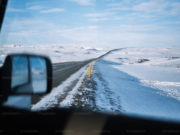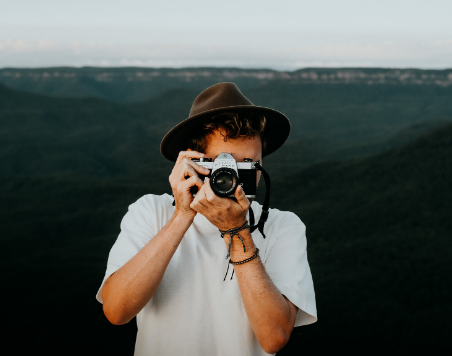Capturing the essence of another destination through photography has, for quite some time, been a cherished aspect of travelling. Whether you’re exploring bustling cities, serene landscapes, or vibrant cultures, having the option to immortalize these moments through the lens of a camera is a rewarding experience. But mastering travel photography goes beyond just snapping a picture; it includes a careful equilibrium of technical abilities, artistic vision, and an understanding of the extraordinary difficulties that accompany shooting in varying environments.
1. Picking the right gear: Learn about the best camera and lenses for travel photography.
With regards to travel photography, the gear you decide to bring along can have a significant effect on the quality of your images. With countless options accessible on the market, it can be overwhelming to choose what camera and lenses to invest in.
First and foremost, consider the type of photography you will do on your travels. Are you planning on capturing landscapes, cityscapes, portraits, or a mix of everything? Knowing your shooting style will assist you in determining the best equipment to bring along.
For most travel photographers, a versatile camera with a wide range of capabilities is essential. Mirrorless cameras are a popular choice for their compact size, lightweight design, and excellent picture quality. A few popular options to consider are the Sony A7 series, the Fujifilm X-T series, or the Canon EOS R series.
Read Also, How to Stay Updated in the IT Industry
With regards to lenses, a long-range lens with a wide central range is great for travel photography. This will permit you to capture a variety of scenes without having to constantly switch lenses. A standard long-range lens like a 24-70mm or 24-105mm is a decent starting point for most travel photographers.
If you are interested in capturing landscapes and architecture, a wide-point lens is a must-have. Something in the range of 16–35mm will permit you to capture expansive views and dramatic perspectives. Then again, on the off chance that you are more into portrait photography, a prime lens with a wide aperture, similar to a 50mm f/1.8 or an 85mm f/1.4, will give you that beautiful blurred background effect.
Consider investing in a lightweight tripod for those low-light situations or long-exposure shots. This will assist you with stabilizing your camera and capturing sharp images in testing lighting conditions.
Accessories like extra batteries, memory cards, lens filters, and a camera pack are additionally important to have in your gear arsenal. Try to pack everything securely to protect your equipment while moving.
Remember that the best camera and lenses for travel photography are the ones that you are comfortable utilizing and that suit your style of photography. Do some research, test out different gear options, and see what works best for you. Don’t be afraid to rent equipment before committing to a purchase to ensure it meets your requirements.
2. Understanding lighting: Master the art of natural light and how it can improve your photos.
With regards to capturing the perfect travel photos, it is vital to understand lighting. How light interacts with your subject can represent the deciding moment of a photo, so it’s important to master the art of utilizing natural light to improve your images.
Natural light is often considered the most flattering source of light for photography. Early morning and late afternoon are known as the “brilliant hours” because the sunlight is softer and creates a warm, gentle sparkle. During these times, you can capture stunning photos with beautiful, soft shadows and highlights that add depth and aspect to your images.
The late morning sun, then again, can be harsh and create unflattering shadows on your subject. To combat this, try to find concealed areas or utilize a diffuser to soften the light. Alternatively, you can try shooting with the sun behind your subject to create a silhouette or utilize reflective surfaces to skip light back onto your subject.
Shady days can likewise provide great lighting for photography. The diffused light from the mists creates a soft, even gleam that can bring out the colors in your photos. Don’t let overcast skies deter you from taking photos; embrace the grouchy atmosphere and use it to your advantage.
While shooting indoors, natural light from windows can be your best friend. Position your subject near a window to take advantage of the soft, diffused light that filters through. Abstain from utilizing harsh artificial lighting, which can create unflattering shadows and color casts. On the off chance that you want more light, consider utilizing reflectors or white froth boards to bob light back onto your subject.
Experimenting with backlighting can likewise produce stunning results. Position your subject in front of a strong light source, like the sun or a window, to create a radiance effect around them. This can add drama and a feeling of warmth to your photos, making them more outwardly interesting.
With regards to involving natural light in your photography, it’s important to focus on the direction, quality, and intensity of the light. Move around your subject to see how the light changes, and experiment with different points to find the most flattering lighting for your photos. Don’t be afraid to mess with shadows and highlights; they can add depth and interest to your images.
3. Composition techniques: Discover how to frame your shots and create outwardly satisfying images.
About travel photography, mastering composition techniques is essential to creating outwardly engaging images that capture the substance of your experiences. Framing your shots effectively can make the difference between a mediocre photo and a stunning masterpiece.
One of the most important composition techniques to consider is the rule of thirds. This rule suggests partitioning your frame into nine equivalent parts with two horizontal and two vertical lines. By setting your subject or points of interest thusly or at their intersections, you can create a fair and outwardly satisfying composition that draws the viewer’s eye.
Driving lines are another powerful composition tool that can add depth and movement to your photos. Search for natural lines or patterns in your environment, like roads, walls, or rivers, that can lead the viewer’s attention to your fundamental subject. These lines can assist with directing the viewer through the picture and create a feeling of perspective and visual interest.
Read 5 Best Countries with the Highest Paying Tech Jobs
Another composition technique to remember is framing. By framing your subject with elements in your environment, like doorways, windows, or trees, you can create a feeling of depth and context in your photos. This technique can assist with drawing attention to your subject and adding a storytelling element to your images.
Experimenting with different perspectives and points of view can likewise upgrade your compositions. Instead of continuously shooting from eye level, try getting low to the ground or shooting from above to mix it up and add visual interest to your photos. Having a significant impact on your perspective can transform a commonplace scene into a captivating picture that captures the viewer’s attention.
Utilizing negative space can likewise be a powerful composition technique in travel photography. Negative space refers to the areas of your picture that are empty or abandoned by your subject. By remembering negative space for your compositions, you can create a feeling of simplicity and spotlight on your principal subject, making it stand out more prominently in the frame.
While forming your shots, focus on the equilibrium of the elements in your frame. Try to stay away from cluttered or unequal compositions that can overwhelm the viewer. Instead, go for the gold clarity in your images, zeroing in on a couple of key elements that tell a convincing story or summon a specific state of mind.
Remember, there are no hard-and-fast rules concerning composition in photography. The most important thing is to experiment, practice, and trust your creative instincts. By exploring different composition techniques and learning how to frame your shots effectively, you can take your travel photography to the next level and create images that truly reflect the beauty and excitement of your adventures.

























